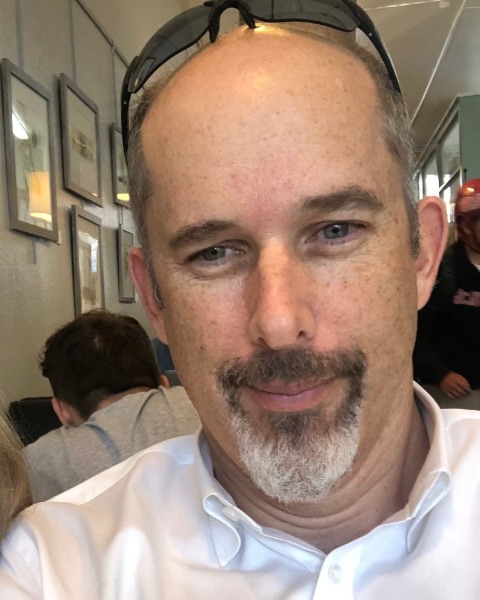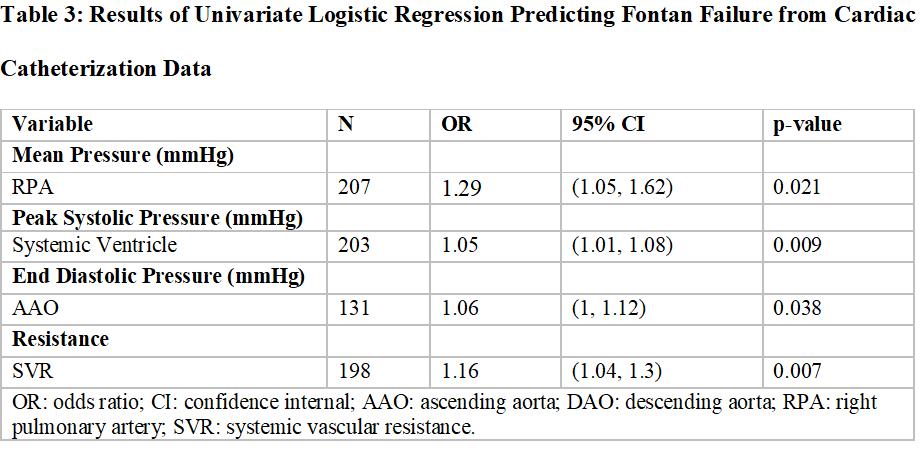Early Career
Associations between pre-Fontan Cardiovascular Magnetic Resonance and Catheterization Data with Fontan Failure
- CW
Caleb Wipf, BA
Medical Students
University of Colorado - CW
Caleb Wipf, BA
Medical Students
University of Colorado - CP
Carson Platnick, BA
Medical Student
University of Colorado - KE
Kaitlin E. Olson, MSc
Statistician
University of Colorado - HS
Hannah Spears, MPH
Analyst and Data Manager, SrPRA
University of Colorado - SS
Samuel Schofield
Data Reporting Analyst
University of Colorado and Children’s Hospital Colorado - BF
Benjamin Frank, MD
Assistant Professor
University of Colorado and Children’s Hospital Colorado - MD
Michael DiMaria, MD
Clinician
C. S. Mott Children's Hospital - JZ
Jenny Zablah, MD
Associate Professor
Children's Hospital Colorado - GM
Gareth Morgan, MD
Clinician
University of Colorado - AV
Alex Verhoeven, MD
Clinician
West Virginia University - NC
Nita R. Chaudhuri, MD
Assistant professor of Pediatric Cardiology
West Virginia University - JU
Jai Udassi, MD
Professor and Chief, Department of Pediatrics
West Virginia University 
Brian Fonseca, MD
Associate Professor of Pediatrics
Children's Hospital Colorado
Lorna P. Browne, MD
Professor
University of Colorado and Children's Hospital Colorado- MH
Mehdi Hedjazi Moghari, PhD
Associate Professor
West Virginia University
Presenting Author(s)
Primary Author(s)
Co-Author(s)
Although post-Fontan survival rates have improved in recent decades, there remains a gap in understanding how pre-Fontan hemodynamic factors influence long-term clinical outcomes, particularly in patients living at higher altitudes. While post-Fontan survival metrics have improved in recent decades, there remains a gap in understanding how pre-Fontan hemodynamic factors relate to long-term clinical outcomes, particularly in patients living at altitude. This study aimed to explore the association between pre-Fontan hemodynamic parameters and the risk of post-Fontan mortality or heart transplantation in a center located at moderate altitude.
Methods:
A retrospective cohort study was conducted on Fontan patients who underwent cardiac catheterization (CC) and cardiovascular magnetic resonance (CMR) between 1999 and 2021 at a single moderate-altitude surgical center. Vascular pressures and resistance were obtained from CC. Vessel flow, area, and cardiac function were obtained from CMR. CMR and CC data from the Glenn stage (pre-Fontan) was analyzed. Univariate logistic regression was used to model the relationship between the probability of transplant or death, whichever occurred first.
Results:
Two hundred and forty unique patients were included (56.7% male, 47.5% with hypoplastic left heart, and 95.8% alive). The mean age at the time of the Fontan procedure was 3.4 ± 1.2 years, and the mean home elevation was 5109.3 ± 1294.3 feet. Most patients had a fenestrated external conduit-type Fontan. The mean follow-up time post-Fontan at the time of data collection was 9.7 ± 5.8 years, as show in Table 1. The parameters analyzed from CC and CMR are listed in Table 2. As shown in Table 3, the following variables were associated with an increased odds ratio (OR) for death or transplant: elevated systemic vascular resistance (SVR)[ [OR=1.16; 95% CI=(1.04,1.30); p-value=0.007], elevated right pulmonary artery (RPA) mean pressure [OR=1.29; 95% CI=(1.05,1.62); p-value=0.021], elevated peak systolic pressure of the systemic ventricle [OR=1.05; 95% CI=(1.01,1.08); p-value=0.009], and elevated end-diastolic pressure of the ascending aorta (AAO) [OR=1.06; 95% CI=(1.00,1.12); p-value=0.038]. No other pre-Fontan variables had statistically significant associations with death/transplant.
Conclusion:
This study provides insights into pre-Fontan hemodynamic parameters as measured by CMR and CC at a moderate-altitude surgical center, and preliminary data on pre-Fontan hemodynamic associations with Fontan failure. While elevated pre-Fontan SVR was significantly associated with an increased OR for death or transplant, interestingly, elevated PVR was not. Additionally, we found that elevated RPA mean pressure, elevated peak systolic pressure of the systemic ventricle, and elevated EDP of the AAO were significantly associated with the primary outcome. Future work will aim to expand this study into a two-center investigation to further validate our findings.

